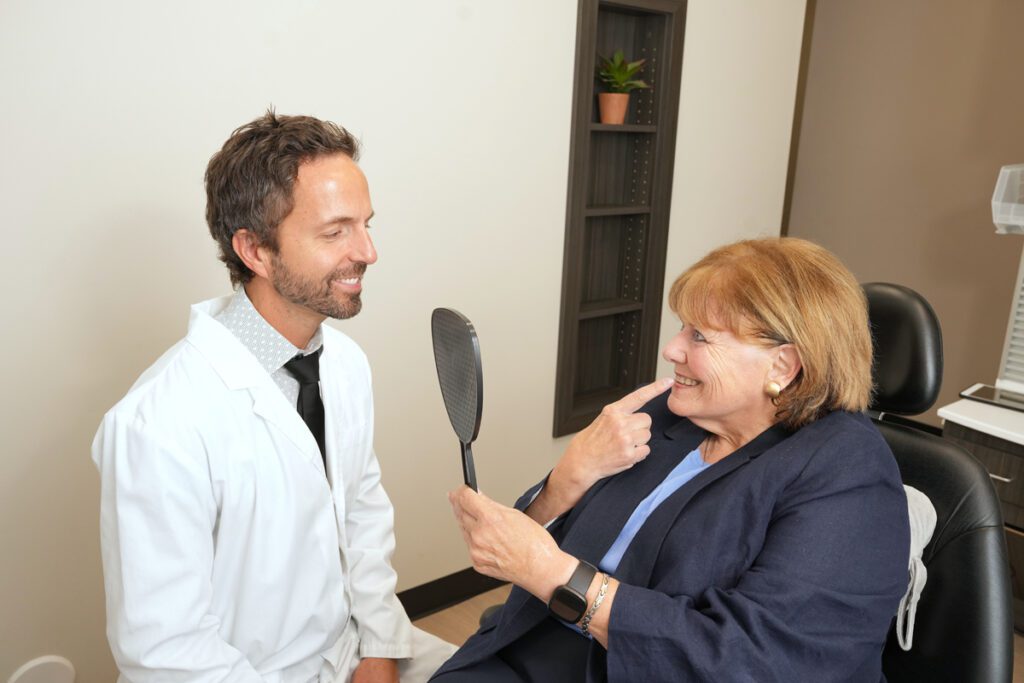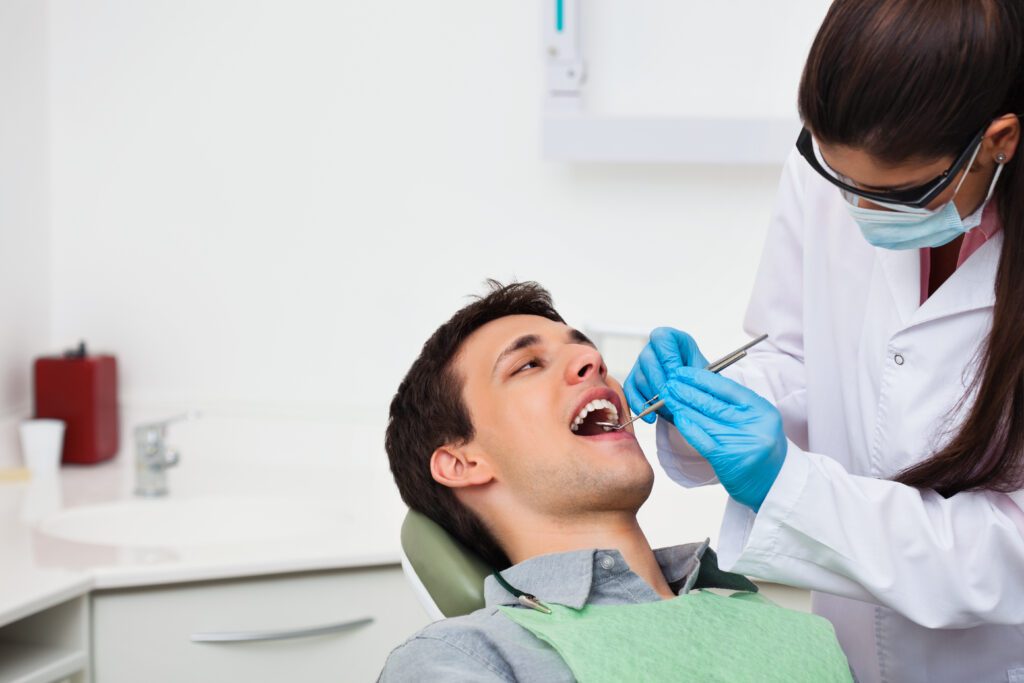Tooth Trouble at Midnight? Why an Emergency Dentist Near Me Is Your Lifesaver
When severe tooth pain strikes at 2 AM or your child knocks out a tooth during weekend soccer practice, waiting until Monday morning isn’t just uncomfortable—it could cost you the tooth entirely. Dental emergencies don’t follow business hours, and the difference between immediate professional care and delayed treatment often determines whether you’ll keep your natural smile.
Understanding how to identify true emergency dentist near me, locate qualified after-hours care, and take appropriate first aid measures can mean the difference between a simple repair and extensive reconstruction. This comprehensive guide will equip you with essential knowledge to confidently navigate any dental crisis, ensuring you receive the urgent care needed to protect your oral health when every minute counts.
Understanding True Dental Emergencies: When Every Minute Counts
Life-Threatening Situations
Certain dental emergencies pose immediate risks to your overall health and require emergency room evaluation. Facial swelling that affects breathing or swallowing indicates a serious infection that could block your airway. Uncontrolled bleeding following dental trauma may signal damage to major blood vessels requiring immediate medical intervention. Severe facial trauma involving fractures, deep lacerations, or suspected head injuries demands emergency medical attention before addressing dental concerns.
Tooth-Threatening Conditions
Time-sensitive dental emergencies that threaten tooth survival include knocked-out permanent teeth, which have the highest reimplantation success rates when treated within 60 minutes. Severe tooth fractures exposing the pulp (nerve) require immediate coverage to prevent infection and preserve tooth vitality. Dental abscesses causing intense pain, facial swelling, or fever indicate spreading infection that could become life-threatening without prompt antibiotic therapy and drainage.
Pain Management Priorities
Emergency-level dental pain typically presents as constant, throbbing discomfort that interferes with sleep, eating, or normal activities. This differs from occasional sensitivity or mild discomfort that responds to over-the-counter pain medications. Sudden onset of severe pain often indicates nerve damage, infection, or trauma requiring immediate professional evaluation to prevent irreversible damage to tooth structures.

The Critical Window: Why Timing Matters in Dental Emergencies
Golden Hour for Tooth Reimplantation
Research consistently shows that knocked-out permanent teeth have the highest survival rates when reimplanted within 60 minutes of injury. Success rates drop significantly after two hours, making immediate emergency dental care crucial for tooth preservation. Proper handling and storage during transport—keeping the tooth moist in milk, saliva, or specialized preservation solution—maintains cell viability essential for successful reimplantation.
Infection Progression Risks
Untreated dental infections can spread rapidly through facial tissues, potentially reaching vital structures in the neck and chest. Ludwig’s angina, a serious infection of the floor of the mouth, can develop within hours and compromise breathing. Early antibiotic intervention and drainage procedures performed by emergency dental providers prevent minor infections from becoming life-threatening medical emergencies.
Damage Limitation Strategies
Prompt emergency treatment often prevents minor injuries from requiring extensive reconstruction. A small chip treated immediately may need only simple bonding, while delayed treatment could lead to nerve death requiring root canal therapy and crown placement. Early intervention for cracked teeth can prevent complete fracture and tooth loss, preserving more natural tooth structure.
Finding Emergency Dental Care: Your Action Plan for After-Hours Situations
Emergency Dentist Networks
Hospital emergency departments can provide referrals to on-call dentists for urgent dental conditions. State and local dental associations maintain directories of members providing emergency services, often available through their websites or phone systems. Online verification through professional licensing boards ensures emergency providers maintain current credentials and good standing within the dental community.
24-Hour Dental Services
True emergency dental clinics provide immediate treatment capabilities including X-ray equipment, surgical instruments, and prescription medications. On-call services typically involve dentists who can meet patients at their regular offices for urgent treatment. Some large dental practices maintain dedicated emergency lines with guaranteed response times for established patients experiencing urgent dental problems.
Geographic Considerations
Identify multiple emergency dental options within reasonable driving distance, considering traffic patterns and travel times during different hours. Rural areas may require longer travel distances to reach emergency care, making advance planning particularly important. Urban areas typically offer more emergency options but may involve navigating unfamiliar locations during stressful situations.
What to Expect: The Emergency Dental Visit Experience
Immediate Assessment Process
Emergency dentists begin with rapid pain assessment and vital sign evaluation to identify life-threatening conditions requiring immediate medical attention. Clinical examination focuses on determining the extent of damage, infection signs, and appropriate treatment priorities. Digital X-rays provide immediate diagnostic information essential for treatment planning and outcome prediction.
Emergency Treatment Options
Emergency procedures focus on pain relief, infection control, and tooth preservation through the most conservative effective treatment. Temporary restorations protect damaged teeth until definitive treatment can be completed during regular office hours. Some complex procedures may require referral to specialists, with emergency treatment providing stabilization until specialist consultation.
Follow-Up Care Planning
Emergency treatment typically provides immediate relief while planning comprehensive care with your regular dentist. Prescription medications for pain and infection control bridge the gap until follow-up appointments. Clear instructions for post-treatment care and warning signs requiring immediate return ensure optimal healing and prevent complications.

First Aid Essentials: What to Do Before You Reach the Emergency Dentist
Knocked-Out Tooth Protocol
Handle avulsed teeth only by the crown (white part), avoiding contact with root surfaces that contain cells essential for reimplantation. Gently rinse with water if dirty, but never scrub or remove attached tissue fragments. Store in milk, saline solution, or specialized tooth preservation medium—never plain water, which damages root surface cells.
Pain and Swelling Management
Over-the-counter anti-inflammatory medications like ibuprofen provide effective pain relief while reducing swelling that could complicate treatment. Cold compresses applied for 15-20 minutes at intervals help control swelling and numb pain during transport to emergency care.
Damage Control Measures
Cover sharp tooth edges with temporary dental wax or sugar-free gum to prevent soft tissue injury. Apply direct pressure with clean gauze to control bleeding from oral lacerations. Avoid extreme temperatures in food and drinks that could trigger severe pain in damaged teeth during transport to emergency care.
Common Dental Emergencies: Recognition and Response Strategies
Traumatic Injuries
Chipped teeth with sharp edges require immediate attention to prevent soft tissue injury and further damage. Cracked teeth may cause sudden severe pain when biting, indicating possible nerve involvement requiring immediate evaluation. Complete tooth fractures often expose nerve tissue, demanding urgent coverage to prevent infection and preserve tooth vitality.
Severe Toothache Situations
Constant throbbing pain that worsens with pressure typically indicates nerve inflammation or infection requiring immediate intervention. Pain accompanied by facial swelling, fever, or difficulty swallowing suggests serious infection spread, demanding emergency treatment.
Lost Restorations
Dislodged crowns expose prepared tooth structures vulnerable to fracture and temperature sensitivity. Lost fillings create cavities prone to food impaction and further decay progression. Loose bridges or partial dentures can cause soft tissue irritation and interfere with normal function if not promptly addressed.
Emergency vs. Urgent vs. Routine: Making the Right Choice
True Emergency Criteria
Life-threatening situations including facial swelling affecting breathing, uncontrolled bleeding, or severe trauma require immediate emergency room evaluation. Tooth-threatening conditions like knocked-out teeth, severe fractures, or abscesses demand urgent dental intervention within hours.
Urgent Care Situations
Moderate pain responsive to over-the-counter medications can typically wait 24-48 hours for professional evaluation. Lost fillings or crowns without severe pain need prompt attention but rarely constitute middle-of-the-night emergencies. Swelling without breathing difficulties usually indicates localized infection manageable with urgent care within one to two days.
Manageable Concerns
Minor chips without sharp edges or pain can safely wait for routine dental appointments with temporary protective measures. Mild sensitivity to temperature changes typically indicates minor issues manageable with desensitizing toothpaste until regular dental evaluation.

Prevention and Preparedness: Your Emergency Readiness Plan
Emergency Kit Essentials
Maintain a dental emergency kit containing temporary filling material, dental wax, pain medications, and emergency contact information. Include gauze pads for bleeding control, cold compress materials, and a small container with lid for tooth storage. Keep emergency kit supplies current and easily accessible during travel or activities with higher injury risk.
Risk Factor Awareness
Contact sports, recreational activities, and occupations with trauma risk benefit from custom protective mouthguards. Habits like ice chewing, using teeth as tools, or grinding during sleep increase emergency risk through gradual tooth damage. Medical conditions affecting bone density, clotting, or immune function may complicate emergency treatment and require special precautions.
Family Emergency Planning
Ensure all family members know how to contact emergency dental services and basic first aid measures for common dental injuries. Practice emergency scenarios with children to reduce panic and improve cooperation during actual emergencies. Maintain current emergency contact information for all family members’ dental providers and update as needed.
Pinecrest Dental: Your Trusted Partner for Emergency Dental Care
Dr. Williams’ Emergency Expertise
Dr. Williams brings extensive training in urgent dental care and trauma management, with proven success in handling complex emergency situations. His comprehensive approach addresses immediate pain relief while developing treatment plans that preserve natural tooth structures whenever possible.
After-Hours Availability
Our dedicated emergency contact system provides prompt response when dental crises occur outside regular office hours. Clear communication protocols ensure you receive immediate guidance for urgent situations and timely scheduling for emergency appointments.
Advanced Emergency Equipment
State-of-the-art diagnostic technology enables comprehensive emergency evaluation and treatment planning in our comfortable, well-equipped facility. Modern surgical instruments and materials allow for immediate definitive treatment of most emergency conditions. Our investment in advanced emergency equipment ensures you receive the highest quality urgent dental care available.
Your Oral Health Emergency Action Plan
Dental emergencies demand the same urgent attention as any other medical crisis, with prompt professional care often determining whether you’ll preserve your natural smile. Understanding how to identify true emergencies, provide appropriate first aid, and access qualified emergency dental services empowers you to protect your oral health when urgent situations arise.
The key to successful emergency outcomes lies in preparation—knowing your emergency dental resources, maintaining a basic emergency kit, and understanding when to seek immediate professional care. Time-sensitive situations like knocked-out teeth or severe infections require rapid response, while proper first aid measures can significantly improve treatment outcomes.
Your oral health deserves immediate professional attention during urgent situations, and having a trusted emergency dental provider ensures you’ll receive the expert care needed to preserve your natural teeth and overall health.
Dr. Tyler Williams: Pinecrest Dental Functional Dentistry, Implants and Biomimetic Bonding
https://www.google.com/maps?cid=17306132237136820639
+18012669914
1464 E Whitestone Dr Suite 1, Cottonwood Heights, UT 84121, United States
pinecrestdds.com
